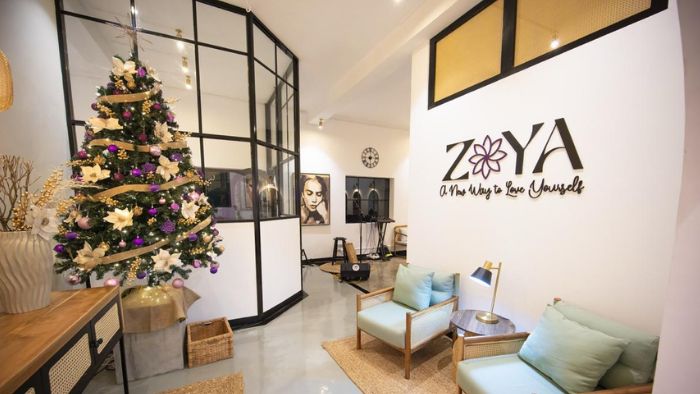Colombo’s only proper museum (the Dutch Museum and the weird Old Town Hall one barely come on par) is pretty amazing. This Italianate colonial style building houses statues, artifacts and paintings that go way back in Sri Lanka’s history.
While the main museum up front is your typical exhibit space, with good lighting, updated labels and organized sections, the museum premises also includes the Natural History Museum which is pretty old, weird and utterly fascinating (in a decrepit way).
Navigation
The museum is pretty big, plus these days parts of the front and back are up for renovation so it’s soon going to be even bigger. At the gate is a side room where art classes are conducted. Walk down the pathway to the main building where you get four big rooms of exhibits, two on the ground floor with mostly ancient relics and two upstairs that focus on ancient paintings and traditional textiles.
If you go behind the building, there’s a stone wall next to which there’s an opening, and if you enter here and walk through a lush garden you end up at the Natural History Museum. In this building you get the Taxidermy exhibits, the Plant Science exhibits, and the National Engineering Technological Heritage Gallery.
The Main Museum
The entrance ticket is Rs. 15 for locals [Editor’s Note: Shifani seems to have somehow paid the child price, their posted ticket price is Rs. 25 for local adults, Rs. 500 for foreigners. A combo ticket (both museums) is Rs. 35 or Rs. 600].
Upon walking in you are met with mostly relics from ancient Kandy and Anuradhapura, and gifts of relics to Sri Lanka from Chinese ambassadors, all dating as far back as the 11th century. One of the highlights of the exhibit is at the very end of the room: the royal throne sat on by the last King of the Kandyan Empire among others before him.
Also worth checking out are the amazing array of decorative Royal knives and swords exhibited here. The intricate jewellery once worn by the women of Sri Lanka’s Royal families are also quite cool.
Once you cross over to the other room on the ground floor (through an open corridor of more relics from ancient civilizations, which everybody quite happily touches as they walk past) – you get even older relics, some from Polannaruwa as well, a row of busts of the Buddha from other countries like the Maldives (pic above), and glimpses into the mysterious world our ancestors lived in such as an efficient water filter constructed out of stone.
[Editor’s Note: don’t touch the relics]
The stairs to the first floor can be found in the second room from the entrance, and they lead to a room of gigantic paintings that go as far back as the 5th century in Sigiriya among other places. At the back of the room are a few cave-paintings by the Veddahs as well. The paintings aren’t even cased in glass for some reason, little parts of them are blotched, but they are still amazing to behold when you think of the ancient world from which the paper or cloth came. Cross the open corridor on the first floor and you’ll find the textiles room on the other side, which has little more than a few photos and exhibits of traditional clothing and a handloom machine.
The Natural History Museum
Although the main museum is beautiful and thankfully so well maintained – the old Natural History is crumbling and depressing as a museum, but fascinating if you’re into the quirky and weird. The building is round the back of the white building, and you have to walk up a short flight of old stairs before you get to a corridor. Behold the taxidermy section – where there are rooms showcasing real animals that have been killed and preserved, and placed in natural positions in an artificial jungle. A staff member pointed to a leopard and said ’11 men killed this one’. Besides the leopards you get deer, pea fowls, boars and elephants here too.
There’s a rare specimen of a goat with two heads, eight legs and two tails, squeezed into a little jar out in front.
Further inside, on the first floor, the exhibits get quite random. This amazing jaw bone of a blue whale (about 10 feet in height) is just casually placed on the side of a corridor.
Next to the blue whale bone is this dugong chilling on a beach. The exhibits are so various and touch upon almost every species of animal, and there’s even an old section on the solar system with hand-written information boards and everything.
There is a Plant Science section that can be accessed at the end of the ground floor corridor, but it’s literally just a bunch of leaves and Biology text-book pictures, so it isn’t very interesting. The National Engineering Technological Heritage Gallery on the top most floor is extremely cool, and we think it’s relatively new – photography is not allowed here, and it contains detailed information via sign boards, TV screens and very detailed models, of ancient Sri Lankan civilizations, their irrigation systems and their architecture, which is in many ways superior to modern systems.
Conclusion
The Colombo National Museum has got a wealth of knowledge. It’s probably the only place that’s got this much comprehensive and interactive info on Sri Lanka and its history (they’ve also got a library which is open till 5PM). Even if the educational angle doesn’t interest you, the old Natural History Museum out back makes for a crazy fascinating visit.

















